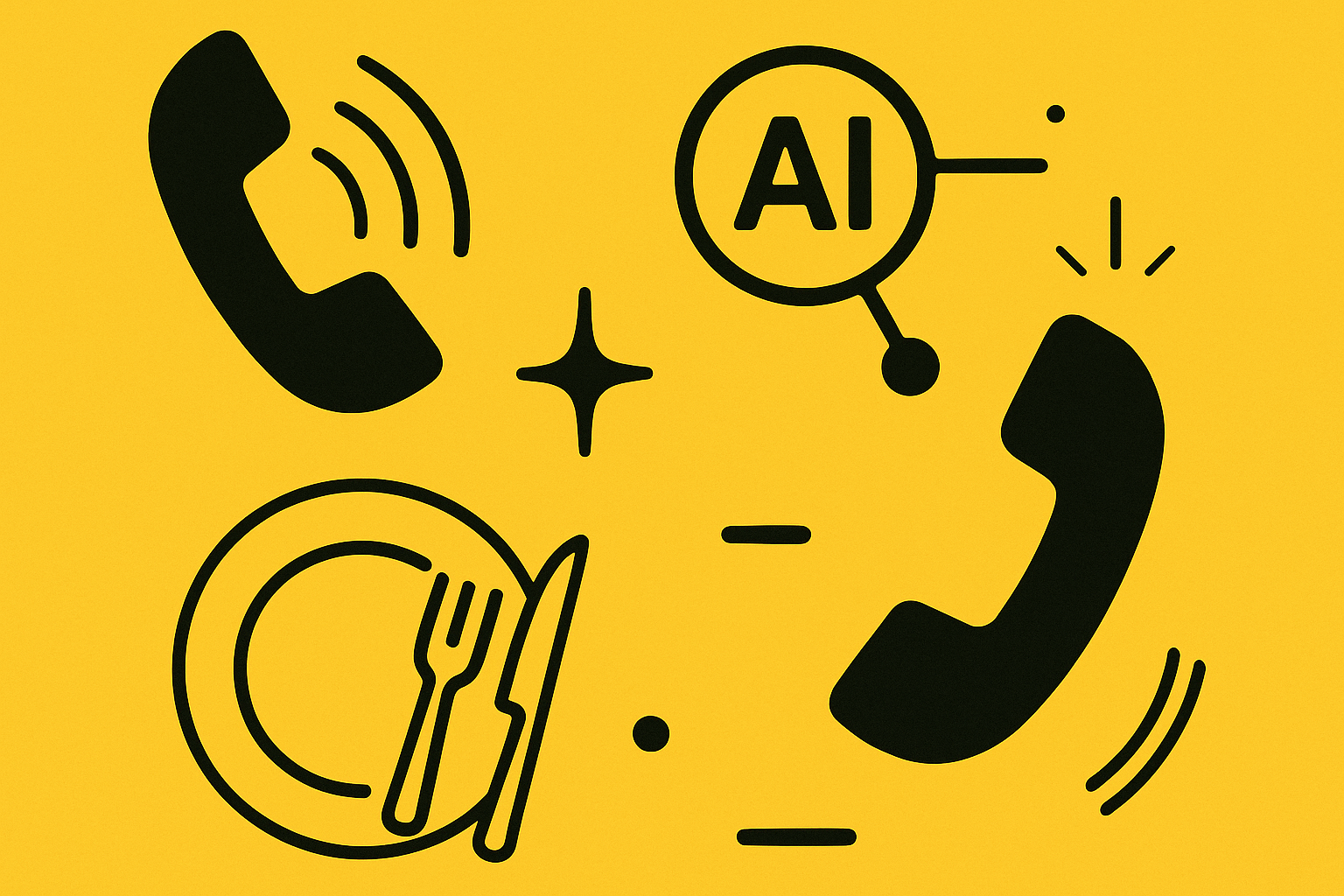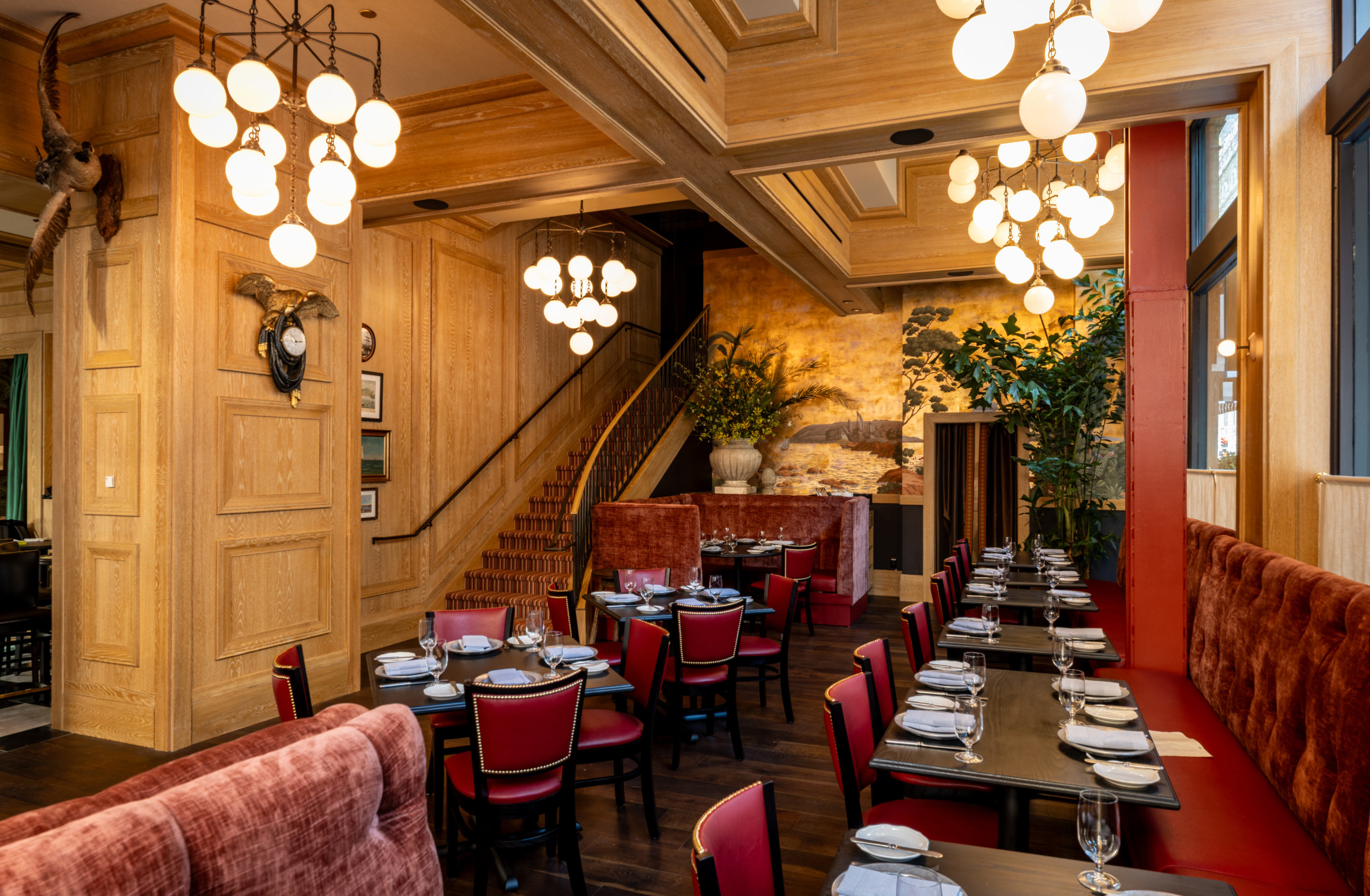
When you call your favorite restaurant today, there's a good chance you're chatting with an AI host rather than a human. (Ars Technica) This shift isn't just a tech trend—it's a necessity. Restaurants field hundreds of calls monthly from curious diners asking about dress codes, allergen policies, and availability, while staff struggle to keep up during busy service periods. (Hostie AI)
The AI voice ordering market has exploded, with platforms like Hostie AI and SoundHound leading the charge. SoundHound recently announced processing over 100 million customer interactions, handling hundreds of millions of dollars in food orders across major chains like Chipotle and Jersey Mike's. (SoundHound AI) Meanwhile, Hostie AI has carved out its niche as "AI for restaurants, made by restaurants," focusing specifically on the hospitality industry's unique needs. (Hostie AI)
For restaurant operators weighing these platforms, the decision goes far beyond basic call handling. You're choosing a system that will represent your brand 24/7, integrate with your existing tech stack, and potentially impact your bottom line through upselling and operational efficiency. This comprehensive comparison examines 15 critical decision factors to help you choose the right AI receptionist for your restaurant.
Restaurant phone systems face unprecedented pressure. In-demand establishments receive between 800 and 1,000 calls per month, with many inquiries covering basic information readily available on websites. (Hostie AI) The challenge intensifies when you consider that over two-thirds of Americans would abandon restaurants that don't answer their phones. (Hostie AI)
The labor economics make human-only solutions increasingly untenable. At $17 per hour, restaurants struggle to retain phone staff, with high turnover creating constant training costs and service inconsistencies. (Newo AI) This reality has driven major chains like Applebee's and IHOP to test Voice AI Agents, recognizing that artificial intelligence offers both cost savings and improved customer experience. (Newo AI)
The food and beverage AI market, currently valued at $9.68 billion, is projected to reach $49 billion over the next five years, indicating massive industry investment in these solutions. (Hospitality Tech) This growth reflects not just technological advancement, but genuine business necessity.
Hostie AI was created by a restaurant owner and an AI engineer, Brendan Wood, giving it unique insight into hospitality operations. (Hostie AI) The platform positions itself as "AI for restaurants, made by restaurants," emphasizing deep industry understanding over broad market appeal. (Hostie AI)
The system handles calls, texts, emails, reservations, and takeout orders through an AI assistant named Jasmine. (Hostie AI) What sets Hostie apart is its integration philosophy—the platform connects directly with existing reservation systems, POS systems, and even event planning software, minimizing operational disruption. (Hostie AI)
SoundHound brings enterprise-grade voice AI technology to restaurants, leveraging its broader voice assistant expertise. The platform has achieved significant scale, processing over 100 million customer interactions and serving major chains including Chipotle, Jersey Mike's, Applebee's, and Habit Burger. (SoundHound AI)
SoundHound's technology foundation comes from its acquisition of SYNQ3 in early 2024, specifically targeting restaurant phone ordering capabilities. (SoundHound AI) The platform recently expanded its offerings with in-vehicle voice commerce, allowing customers to order takeout directly from their car's infotainment system. (SoundHound AI)
| Feature Category | Hostie AI | SoundHound | Winner |
|---|---|---|---|
| Language Support | 20 languages | 25 languages | SoundHound |
| Industry Focus | Restaurant-specific | Multi-industry | Hostie AI |
| Integration Depth | Native POS/reservation systems | Broad enterprise integrations | Hostie AI |
| Call Volume Handling | Unlimited | Enterprise-scale proven | Tie |
| Customization | Restaurant-tailored workflows | Configurable voice responses | Hostie AI |
| Pricing Transparency | Subscription tiers | Enterprise pricing | Hostie AI |
| Market Presence | Growing startup | Established enterprise | SoundHound |
| Innovation Speed | Restaurant-focused features | Broad AI advancement | Tie |
Both platforms leverage advanced AI, but their approaches differ significantly. Hostie AI focuses on restaurant-specific language patterns, training its models on hospitality conversations and terminology. This specialization helps with industry-specific requests like "Do you have gluten-free options?" or "Can I modify my reservation for tonight?"
SoundHound brings broader voice AI expertise, with technology designed to understand heavily-accented language across its 25 supported languages. (SoundHound AI) This capability proves valuable for diverse metropolitan markets where restaurants serve multilingual customer bases.
The accuracy question ultimately depends on your specific use case. Restaurants with complex menus and frequent modifications might benefit from Hostie's specialized training, while establishments in highly diverse markets might prefer SoundHound's broader language capabilities.
SoundHound supports 25 languages including English, Spanish, Portuguese, French, German, Dutch, Italian, Korean, Japanese, Mandarin, Russian, Polish, Swedish, and Arabic. (SoundHound AI) This extensive language support makes it attractive for restaurants in international markets or diverse urban areas.
Hostie AI offers multilingual support in 20 languages through its AI assistant Jasmine. (Hostie AI) While slightly fewer than SoundHound, this still covers the primary languages needed for most U.S. restaurant markets.
For most restaurant operators, both platforms provide sufficient language coverage. The decision factor becomes whether you need those additional five languages that SoundHound offers, particularly if you serve specific ethnic communities.
This represents a crucial differentiator for restaurant profitability. AI systems can suggest appetizers, desserts, or drink pairings during order conversations, potentially increasing average ticket size. However, the effectiveness depends on how naturally these suggestions integrate into conversations.
Hostie AI's restaurant-specific focus means its upselling algorithms understand hospitality psychology—when to suggest wine pairings, how to recommend appetizers without seeming pushy, and which modifications actually enhance the dining experience. (Hostie AI)
SoundHound's enterprise experience across multiple industries provides sophisticated conversation management, but may lack the nuanced understanding of restaurant upselling psychology that comes from industry specialization.
Integration capabilities determine how seamlessly the AI system fits into existing restaurant operations. Hostie AI emphasizes direct integration with existing reservation systems, POS systems, and event planning software. (Hostie AI) This approach minimizes operational disruption and ensures order accuracy.
SoundHound's enterprise background provides broad integration capabilities, but the depth of restaurant-specific POS integration may vary depending on your existing systems. The platform's scale means it likely supports major POS providers, but customization for smaller or specialized systems might require additional development.
For restaurants with complex existing tech stacks, Hostie's integration philosophy offers advantages. For establishments using standard enterprise POS systems, both platforms likely provide adequate connectivity.
Pricing models significantly impact long-term costs and budget predictability. Hostie AI offers subscription tiers that unlock additional features, providing clear pricing structure for restaurant operators. (Hostie AI) This transparency helps with financial planning and ROI calculations.
SoundHound typically uses enterprise pricing models, which may involve custom quotes based on call volume, features, and integration requirements. While this allows for tailored solutions, it can make initial cost comparison challenging.
For smaller restaurants or chains, Hostie's transparent pricing provides budget certainty. Larger enterprises might benefit from SoundHound's custom pricing, especially if they can negotiate volume discounts.
Restaurant calls range from simple reservation requests to complex private event planning. Hostie AI specifically addresses this range, handling everything from basic reservation changes to complicated order modifications and private event inquiries. (Hostie AI)
SoundHound's proven scale—processing over 100 million interactions—demonstrates capability for high-volume, complex conversations. (SoundHound AI) However, this experience spans multiple industries, not just restaurant-specific scenarios.
Restaurants with complex operations (catering, events, extensive modification options) might prefer Hostie's specialized approach. High-volume establishments with straightforward operations could benefit from either platform.
Your AI system becomes your restaurant's voice, making brand alignment crucial. Hostie AI's restaurant industry focus means understanding hospitality tone—friendly, accommodating, and knowledgeable about food service nuances. The platform was developed with input from actual restaurant operations, including early testing at Bodega SF. (Hostie AI)
SoundHound's broad AI experience provides sophisticated conversation management, but may require more customization to achieve restaurant-specific hospitality tone. The platform's enterprise focus means robust capabilities, but potentially less intuitive restaurant personality.
As restaurants expand, their AI systems must scale accordingly. SoundHound's enterprise heritage and proven scale across major chains demonstrates clear scalability. The platform handles everything from single locations to national chains with thousands of locations.
Hostie AI, while newer, was designed with restaurant growth in mind. The platform's integration approach and subscription model support expansion, though it hasn't yet demonstrated the massive scale that SoundHound has achieved.
For restaurants planning aggressive expansion, SoundHound's proven scalability offers confidence. For steady growth or single-location optimization, both platforms provide adequate scaling capabilities.
The pace of AI advancement means choosing a platform committed to ongoing innovation. SoundHound recently introduced in-vehicle voice commerce, allowing customers to order from their cars—a significant innovation for takeout operations. (SoundHound AI)
Hostie AI's restaurant focus means innovations specifically target hospitality needs. Recent developments include enhanced reservation management and improved integration capabilities. (Hostie AI)
Both platforms show strong innovation trajectories, but in different directions—SoundHound toward broad voice commerce, Hostie toward deeper restaurant specialization.
Implementation complexity affects both initial deployment and ongoing operations. Hostie AI's restaurant focus means support teams understand hospitality operations, potentially reducing implementation time and ongoing support needs.
SoundHound's enterprise experience provides robust support infrastructure, but may require more restaurant-specific customization during implementation. The platform's scale means extensive documentation and support resources.
Customer: "Hi, I'd like to make a reservation for tonight."
Jasmine: "I'd be happy to help you with a reservation! For how many guests, and what time were you hoping for?"
Customer: "Four people, around 7 PM. Also, one person has a severe nut allergy."
Jasmine: "Perfect! I can seat four guests at 7 PM tonight. I've noted the nut allergy and will ensure our kitchen team is informed. Can I get a name for the reservation?"
This interaction demonstrates Hostie's restaurant-specific training, naturally handling both reservation logistics and critical allergy information.
Customer: "I want to order takeout."
AI: "I can help you place a takeout order. What would you like to order today?"
Customer: "Two pepperoni pizzas and garlic bread."
AI: "I have two pepperoni pizzas and garlic bread. Would you like to add any drinks or desserts to complete your order?"
This shows SoundHound's efficient order processing and natural upselling integration.
Human Staff Costs (Monthly):
AI Platform Costs (Estimated):
Break-Even Timeline:
Upselling Benefits:
Missed Call Recovery:
These calculations show that both platforms typically pay for themselves within the first quarter, with ongoing profitability through improved customer service and revenue capture.
The restaurant AI sector has seen "unbelievable, crazy growth" according to Mathew Focht, CEO of the Emerging Fund, which specializes in restaurant tech. (Ars Technica) This growth reflects genuine business need rather than just technological novelty.
However, challenges remain. AI systems face issues with latency and non-deterministic behavior when conversations veer off script. (Ars Technica) These technical limitations mean choosing a platform with robust conversation management becomes crucial.
Industry experts at HITEC Charlotte 2024 identified several key areas where AI will transform hospitality, including enhanced revenue management prediction strategies and changes in the digital booking journey. (Hospitality Net) These developments suggest that AI phone systems represent just the beginning of broader restaurant technology transformation.
Both platforms require basic internet connectivity and phone system integration. Hostie AI's focus on existing system integration means potentially simpler technical requirements, while SoundHound's enterprise approach might require more robust infrastructure for full feature utilization.
Implementing AI phone systems requires staff education about when to escalate calls and how to handle AI-assisted operations. Hostie AI's restaurant focus means training materials and processes designed specifically for hospitality staff. (Hostie AI)
SoundHound's enterprise experience provides comprehensive training resources, but may require customization for restaurant-specific workflows.
Restaurant AI systems handle sensitive customer information including payment data and personal preferences. Both platforms must comply with relevant data protection regulations, but implementation details vary.
Hostie AI's restaurant focus means understanding industry-specific compliance requirements, while SoundHound's enterprise background provides robust security frameworks that may exceed restaurant-specific needs.
AI technology continues advancing rapidly, making platform choice crucial for long-term success. SoundHound's recent innovations like in-vehicle ordering suggest continued investment in voice commerce expansion. (SoundHound AI)
Hostie AI's restaurant specialization means innovations specifically targeting hospitality needs, potentially providing more relevant feature development for restaurant operators.
The restaurant AI market's rapid growth may lead to consolidation, affecting platform availability and pricing. SoundHound's established enterprise presence provides stability, while Hostie AI's recent funding suggests strong growth trajectory. (Hostie AI)
Both Hostie AI and SoundHound offer compelling solutions for restaurant call handling, but they excel in different contexts. Hostie AI's restaurant-specific focus provides advantages for operators who want a platform that understands hospitality nuances and integrates seamlessly with existing restaurant operations. (Hostie AI)
SoundHound's enterprise scale and broad language support make it attractive for large chains or restaurants in highly diverse markets. The platform's proven ability to handle over 100 million interactions demonstrates reliability at scale. (SoundHound AI)
The restaurant industry's AI transformation is accelerating, driven by labor challenges, customer expectations, and proven ROI. (Hospitality Tech) Whether you choose Hostie AI's specialized approach or SoundHound's enterprise scale, implementing AI phone handling represents a strategic investment in your restaurant's future.
The key is matching platform strengths to your specific operational needs, growth plans, and customer demographics. Both platforms offer trial periods or demonstrations—use them to evaluate real-world performance in your environment before making this crucial technology decision.
As the restaurant industry continues evolving, AI phone systems will become as essential as POS systems or reservation platforms. The question isn't whether to implement AI call handling, but which platform best serves your restaurant's unique needs and growth trajectory.
Hostie AI is specifically designed for restaurants with Jasmine offering multilingual support in 20 languages and seamless integration with major reservation and POS systems. SoundHound supports 25 languages and has processed over 100 million customer interactions, serving major chains like Chipotle and Jersey Mike's. The key difference lies in Hostie's restaurant-focused approach versus SoundHound's broader voice AI platform with extensive enterprise experience.
AI restaurant phone systems have significantly improved in accuracy, with SoundHound processing hundreds of millions of dollars worth of food orders successfully. However, challenges remain with latency and non-deterministic behavior when conversations go off-script. According to industry experts, AI hosts are becoming increasingly sophisticated but still require careful implementation to handle complex customer interactions effectively.
Restaurants are adopting AI phone systems due to high call volumes, labor shortages, and operational efficiency needs. Major chains like Applebee's and IHOP announced AI implementation plans in June 2025 to streamline operations and reduce staff stress. The food and beverage AI market, valued at $9.68 billion, is projected to reach $49 billion over the next five years, indicating widespread industry adoption.
According to Hostie's research, over two-thirds of Americans would ditch restaurants that don't answer the phone, highlighting the critical importance of call handling. This represents a significant revenue risk for restaurants, as missed calls directly translate to lost reservations and orders. AI phone systems like Hostie and SoundHound provide 24/7 availability to ensure no customer call goes unanswered.
Yes, both platforms offer robust multilingual support. Hostie's AI assistant Jasmine supports 20 languages, while SoundHound supports 25 languages including English, Spanish, French, German, Japanese, and Mandarin. SoundHound is specifically designed to accurately understand heavily-accented language and allows for language-specific queries and custom commands, making it suitable for diverse customer bases.
Modern AI restaurant phone systems integrate with major reservation systems and leading POS platforms to provide seamless operations. Hostie offers direct integration with reservation and POS systems for 24/7 management of bookings and orders. These integrations allow AI systems to access real-time menu information, availability, and customer data to provide accurate responses and complete transactions efficiently.
RELATED


